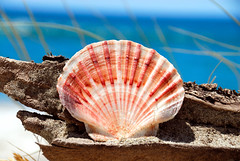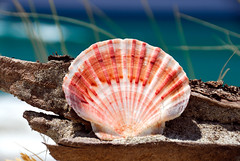I received a circular polarizing filter as a gift, but I have a hard time determining when I should be using it.
I've done river shots with some success, but other than that, it doesn't seem to do much beyond reducing the amount of light.
What am I missing?
Answer
I use polarizer so much that I never take it off of my main lens. The good thing about it that depending on its rotation you can adjust how strongly it affects you picture from maximum to virtually nothing.
Let's start with what the polarizer physically does:
- it reduces (sometimes completely) the glare from non-metallic objects.
How does it translate to photographic situations?
- enhances the blue of the sky and pulls out the detail on clouds
- enhances the green of leaves and generally colors of plants and their flowers
- makes the water and glass transparent
- reduces the shining of human skin and gives it a soft appearance
- it can remove the rainbow (which I imagine is rarely desired)
- it enhances the overall contrast of the picture, creating very dramatic result in extreme cases
Examples of the same subject non-polarized (left) and polarized (right):
When does it work best?
- when the camera is facing on an angle 90° to the sun and the direction marker is positioned towards sun (hope it's clear - I'm not quite happy with the wording here, will fix it when I come up with something better)
What to be careful about?
- when overused polarizer can give photos a very unnatural appearance (which I personally enjoy)




No comments:
Post a Comment